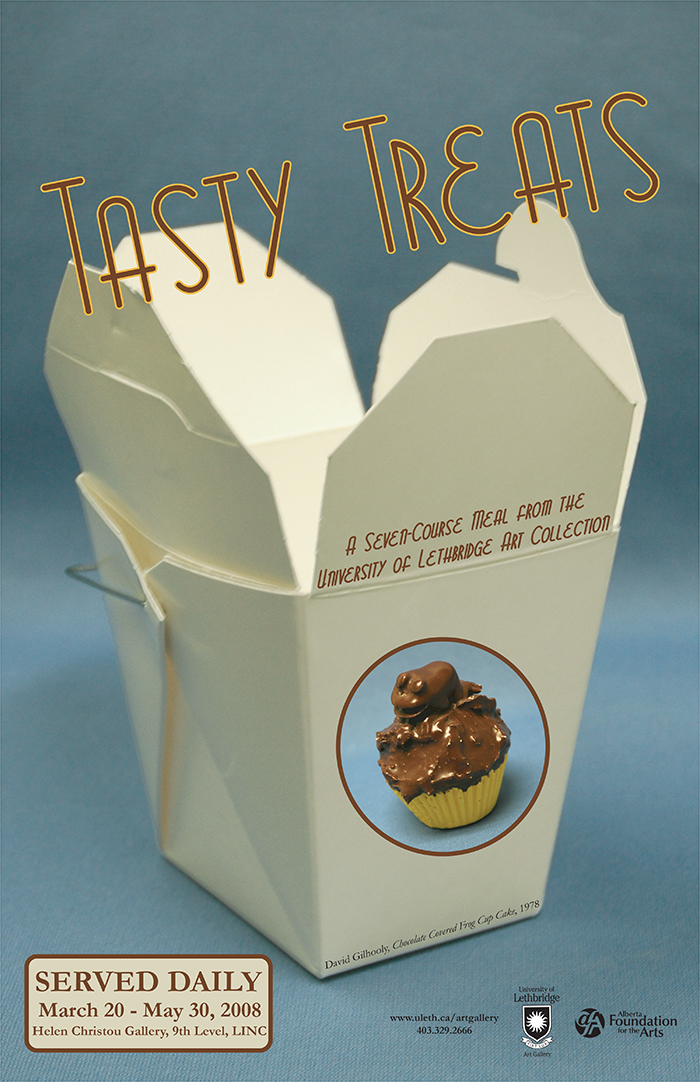
Tasty Treats
Helen Christou Gallery
Curated by Jane Edmundson
The mouth can begin to salivate at the mere mention of one’s most loved foods. A heaping bowl of silky vanilla ice cream, smothered in sticky, crimson strawberry syrup. A soft, rich birthday cake covered in buttercream frosting, cut into tiny triangles of celebration. A slice of piping hot pizza, drowning in melted cheese and fresh herb tomato sauce. A square of chocolate, broken from the bar and placed on the tongue to melt into rivers of sweetness that slide down the throat.
It is a gloomy truth, however, that those who regularly worship at the temple of indulgence are often obliged to repent at the feet of arduous abstinence. Powdered shakes, muddy meal-replacement bars, heaps of home exercise equipment and DVDs, shelves of self-help weight loss books, primetime telecasts of gastric bypass surgery, and no carb, low carb, low fat, high protein, totalitarian diet regimens become the heavyweights in a daily tug-of-war between the taste buds and a tight body.
The human-food relationship is an emotional one, wrapped up in basic need, complex desire, cultural familiarity, ritualistic reward and hidden guilt. It has been studied in depth by medical professionals, nutritionists, scientists, anthropologists and sociologists. Pierre Bourdieu theorized that social class distinctions both support and reinforce particular tastes, including those related to food choice and appreciation, writing “Taste classifies and it classifies the classifier.” A person’s cultural capital is determined by their upbringing and education (directly dependant on social class stratifications), which in turn influence their tastes. Food preferences in particular can be a highly visible marker of one’s class group, and in some cases, the methodical refinement of culinary tastes is employed in a bid to increase one’s cultural capital.
Given the high stakes of personal emotion and social status, it is not surprising that food has been a prevalent theme in artistic production for hundreds of years. Since the 17th century, the still life genre has played a dominant role in Western culture, as a symbol of wealth and plenty, and conversely, a reminder of moral obligation and human mortality. The works chosen for Tasty Treats include faithful continuations, conceptual rebuttals, and playful celebrations of the still life tradition in fine art.
Jane Edmundson
Guest Curator
(1)Pierre Bourdieu, Distinction: A Social Critique of the Judgement of Taste, translated by Nice, R.,
Routledge, London, 1984.





42 thoughts on “Tasty Treats
March 20 – May 30, 2008
Helen Christou Gallery | LINC | Level 9”